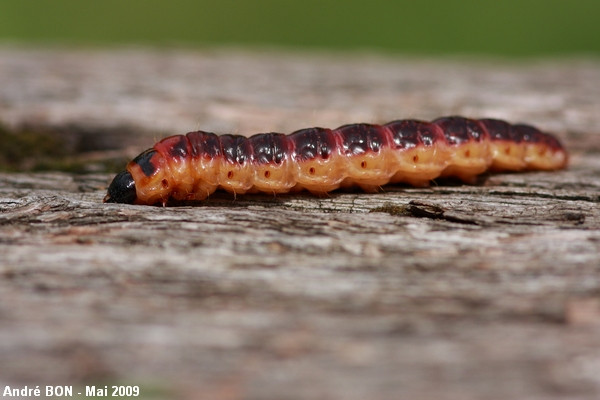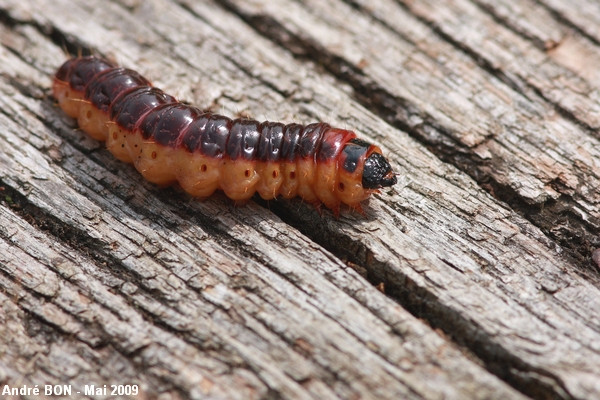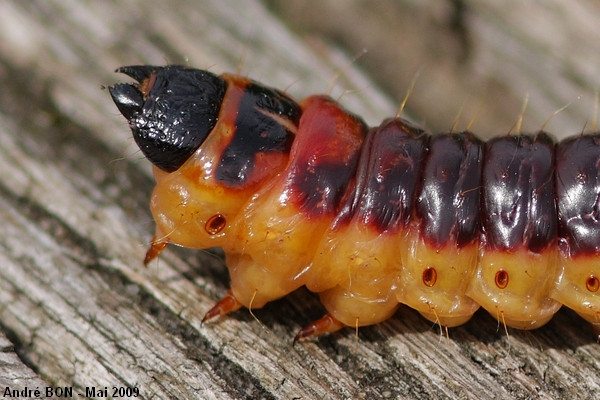


| Goat Moth (Cossus cossus (Linnaeus, 1758)) |



|
|
Scientific name: Cossus cossus (Linnaeus, 1758) Common name: Goat Moth Other names: Other scientific name: Trypanus cossus. French name: Cossus gâte-bois, Cosse du chêne. Order: Lepidoptera Suborder: Heterocera Family: Cossidae Subfamily: Cossinae Wingspan: 70-95 mm. Biotope: Woodland with a preference for slightly damp areas, orchards, parks and gardens. Geographic area: Europe, North Africa. Flight time: April to August Number of generations : 1. The development cycle can last from 2 to 4 years. Caterpillar: Large caterpillar about 10cm long. It is almost hairless and glossy. It is reddish brown on the upper side and yellowish on the underside. The head is black. It grows inside trunks and branches of host trees and can be considered as a pest. Host plant: Many deciduous trees including fruit trees: Willows, Poplars, Elms, Oaks, Alders, Beech trees, Birches, Maples, Ash trees, Lime trees, Walnuts, Apple trees, etc. |
The wings are greyish brown with fine dark cross lines. This pattern eases camouflage on tree trunks. Females are slightly larger than males. The abdomen is large. The English common name (Goat Moth) comes from the strong wood vinegar smell of the mature caterpillar. |
| [To know more about the Goat Moth] [Next picture] [Top] |

|
The size of the Goat Moth's caterpillar is really impressive. I think that this is the largest caterpillar I have ever seen at this date. |
| [To know more about the Goat Moth] [Next picture] [Previous picture] [Top] |

|
I have observed this caterpillar on an old wooden bench in a clearing. I guess that it was looking for a suitable place to pupate. |
| [To know more about the Goat Moth] [Previous picture] [Top] |

|
A close up view on the head enables to see the strong mandibles used to attack tree trunks. |